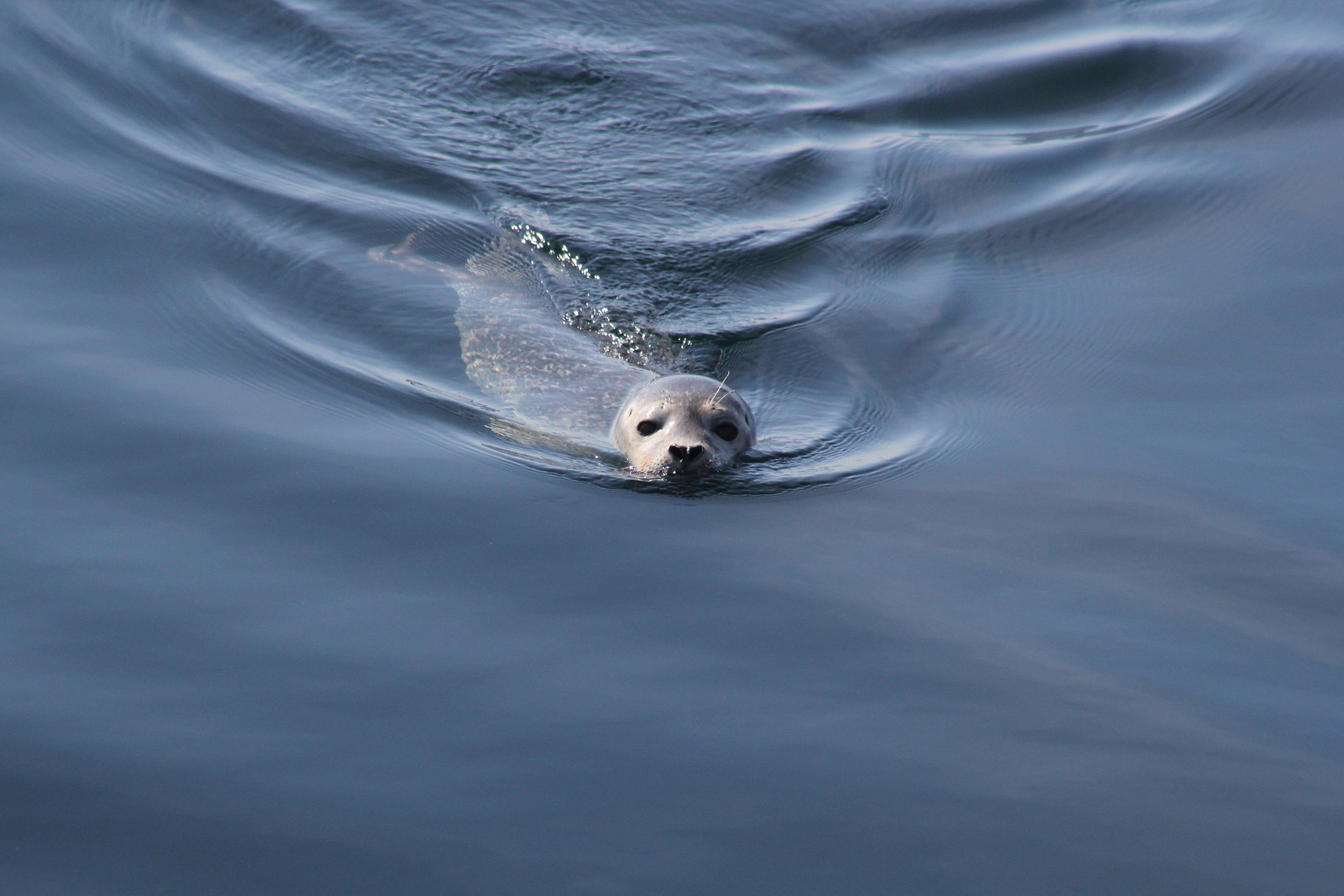
Meet the Seals
Seals are part of a larger group of marine mammals (whales, dolphins, seals, etc.) called the “pinnipeds,” which means feather-footed, which has three types of creatures:
-

Harbor seal swimming along in Massachusetts Bay.
“True seals” (family Phocidae): Harbor seals and gray seals are both species of “true seals;” they have no external ear flap and swim by paddling with their webbed hind flippers. When on land, true seals cannot turn their back flippers underneath their pelvis, so they “hump” along on their bellies (one seal researcher’s team decided the best term for this motion was “scrunching”). The largest of the true seals is the Southern elephant seal, a species in which the males can read 20 feet in length and 8,800 pounds. The smallest of the true seals is the Baikal seal, similar to a harbor seal, which is 4.5 feet long and just 200 pounds. True seals are found in all the oceans of the world except the Indian Ocean.
-

Antarctic fur seal bull with a typically large neck.
“Eared seals” (family Otariidae): Sea lions and fur seals are “eared seals.” They have a small external flap by their ears and swim primarily by paddling their large foreflippers. On land, they can turn their hind flippers under their pelvis and “walk.” Eared seals are less dramatic in their size range than the true seals, though the differences are still significant. In the Steller’s sea lion, the largest of the group, males are 10 feet long and up to 2,200 pounds (females are less than half that). At 5 feet long and 150 pounds (for males), the Galapagos fur seal is the smallest member of this family. There are no eared seals in the North Atlantic, though they are plentiful elsewhere, including in the North Pacific.
-

Atlantic walrus bull coming ashore to rest.
Walrus (the sole member of the family Odobenidae ): There are three subspecies of walrus. Walrus have elements in common with both true and eared seals. Like eared seals, they can “walk,” and like true seals they have no external ear flaps. Of course, their most distinguishing characteristic is their tusks! Both males and females have tusks, although they are larger in the males. Walrus are also unique in that they have very little fur. Scientists are in disagreement today about whether walruses are more closely related to Phocids or Otariids. Walrus are only found in the northern hemisphere.
All pinnipeds hunt for food in the water but give birth on shore or on ice. Because they are tied to the land and widely distributed, they are the marine mammal people are most likely to see.
There are 34 species of pinnipeds in the oceans of the world today. Some, like the crabeater seal and the harp seal, number in the millions. Some, like the Hawaiian monk seal, teeter on the verge of extinction.
The Wampanoag word for seal is Onkeehq.
(Pictured here, a harp seal)
Elizabeth Bradfield
If you look at the worldwide distribution of pinnipeds today, they are in every ocean of the globe, from the Arctic to the Antarctic. In the Indian Ocean, there are not currently any resident pinniped populations, but Southern Ocean species will wander through those waters.
In New England, gray and harbor seals, both true seals, are the most common species– other seals can be seen here, such as harp and hooded seals, but they are less common.
Gray Seal Facts:
Scientific name: Halichoerus grypus
Weight: between 550 (female) and 880 (male) pounds
Length: 7.5 (female) to 10 (male) feet
Lifespan: 25 to 35 years
Harbor Seal Facts:
Scientific name: Phoca vitulina
Weight: between 180 and 285 pounds (both males and females)
Length: around 5 to 6 feet
Lifespan: about 25 to 30 years
References:
https://www.fisheries.noaa.gov/species/gray-seal
https://www.fisheries.noaa.gov/species/harbor-seal
National Geographic Pinniped Distribution Map (poster)


